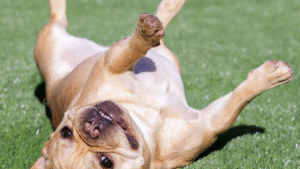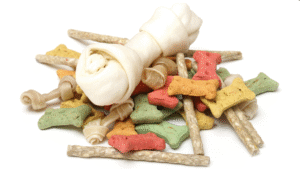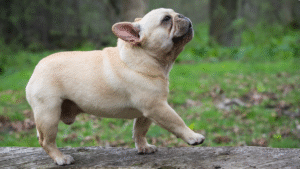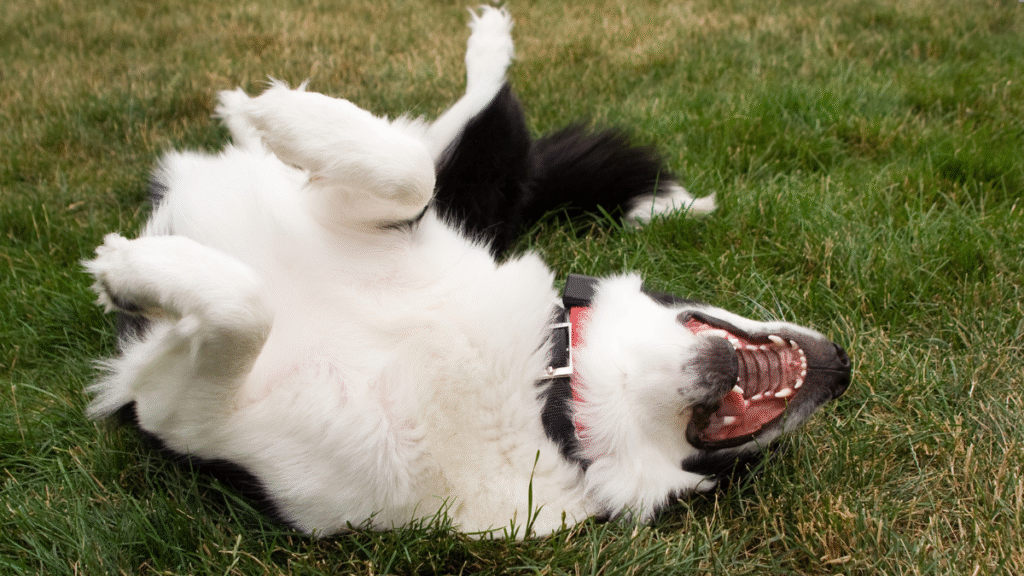Rolling over is one of those fun and classic dog tricks that everyone loves to see their pup perform. It’s not just cute—it’s mentally and physically stimulating for your dog and a great way to improve their obedience skills.
While the trick may seem complicated at first, with the right training method and positive reinforcement, you can teach your dog to roll over easily.

Benefits of Teaching Your Dog to Roll Over
While it may look like a simple party trick, teaching your dog to roll over offers several valuable benefits:
Mental stimulation: Training engages your dog’s mind, combats boredom, and helps prevent destructive behavior.
Physical activity: Rolling over exercises your dog’s muscles, increases flexibility, and helps them use their entire body.
Improved obedience: Learning complex commands makes your dog more attentive and responsive to your cues.
Bond building: Training builds trust, communication, and confidence between you and your pet.
Whether you have a playful puppy or an older dog, they can learn this trick and have fun in the process.
Tools You’ll Need
Before you begin training, gather a few essentials to make the process smoother and more effective:
A comfortable training space: Choose a safe area indoors or outdoors where your dog can lie down comfortably, such as a carpeted room or grassy area.
High-value treats: Use small, soft treats that your dog finds irresistible—chicken, cheese, or dog training treats like SpotOn Dog Training Bites work great.
Clicker (optional): A clicker helps mark the exact moment your dog performs the correct behavior.
Patience and positivity: This is the most important tool of all. Training should always feel like a fun, rewarding experience—not a chore.

Step 1: Teach the “Down” Command
Before your dog can roll over, they need to know how to lie down on command. If your dog isn’t familiar with “Down,” start with this foundation:
-
Hold a treat near your dog’s nose.
-
Slowly lower the treat to the ground between their front paws.
-
Allow your dog to follow the treat with their nose as you move it forward a few inches.
-
As your dog’s head follows the treat, they’ll naturally lower their body into a lying position.
-
When your dog lies down completely, click (or say “Yes!”) and reward them.
-
Repeat this several times, gradually reducing the hand motion and relying on the verbal cue “Down.”
Practice until your dog reliably lies down when you give the command.
Step 2: Lure Your Dog onto Their Side
Once your dog can consistently lie down, you can start encouraging them to roll onto their side.
-
Ask your dog to lie down.
-
Hold a treat near their nose, then slowly move it toward their shoulder.
-
As your dog follows the treat, their body will naturally shift onto one side.
-
When your dog is fully on their side, click or say “Yes!” and reward them.
Repeat several times until your dog easily transitions from lying flat to resting on their side.
Step 3: Encourage the Full Roll Over
Now that your dog is comfortable rolling onto their side, it’s time to guide them into a full roll.
-
Start with your dog lying down.
-
Hold a treat near their nose and move it slowly over their shoulder.
-
Continue moving the treat in an arc so your dog follows it all the way over onto their back, then onto the opposite side.
-
As they complete the roll, say the command “Roll over!”
-
Once your dog finishes the roll, click (or say “Yes!”) and reward immediately.
If your dog doesn’t complete the full roll right away, that’s okay. Some dogs need more time to understand the motion. Use an encouraging tone and reward small progress—such as shifting their weight or rolling halfway over. Gradually raise your expectations until they perform a full roll.

Step 4: Add the Verbal Cue
Once your dog begins rolling over consistently with your hand motion, it’s time to teach them to do it on command.
-
Say the words “Roll over” just before you move your hand with the treat.
-
Help your dog perform the roll as usual, then click and reward.
-
Repeat several times, pairing the verbal cue with the action.
After several repetitions, try giving the verbal command “Roll over” without moving your hand. If your dog performs the trick, reward enthusiastically—this means they’ve connected the word with the behavior.
Step 5: Practice and Reinforce
Training doesn’t end when your dog learns the trick once. To make the behavior stick, you need to reinforce it with consistent practice.
-
Keep training sessions short—about 5 to 10 minutes each.
-
Practice in different locations and at various times of day so your dog generalizes the behavior.
-
Gradually reduce treat frequency, but always offer verbal praise or play as a reward.
-
If your dog seems bored or frustrated, end the session on a positive note and take a short break.
Addressing Common Problems
Every dog learns at their own pace, and some may take longer than others. Here’s how to troubleshoot common issues:
Dog won’t lie down: Spend extra time reinforcing the “Down” command using plenty of treats and praise.
Dog only rolls halfway: Break the trick into smaller steps and reward partial progress. Gradually increase the standard until they complete the full roll.
Dog stands up instead of rolling: Keep your treat close to the ground and move it slowly. A low lure encourages rolling rather than standing.
Dog is fearful or hesitant: Never force your dog to roll. Some dogs dislike being on their backs. Use gentle encouragement, soft praise, and high-value treats to build confidence.

Bonus Training Tips
Train on a soft surface: Carpet, grass, or a dog mat makes it more comfortable for your dog to lie down and roll.
Train when your dog is alert: The best time to train is after light exercise—when your dog is calm but focused.
End on a win: Finish each session after a success, even a small one. Ending positively keeps your dog motivated for next time.
Incorporate the trick into play: Once your dog knows how to roll over, include it in fun games like “roll over for a belly rub” or agility exercises.
Teaching Your Dog More Tricks
After your dog masters “roll over,” you can build on that success by teaching related tricks. These tricks use similar muscle movements and body coordination:
-
Play dead (“Bang!”): Teach your dog to lie still after rolling over.
-
Spin: Similar coordination but performed while standing.
-
Crawl: A low, ground-level movement that pairs well with “Down.”
-
Sit pretty: Excellent for improving balance and core strength.
Advanced tricks like these provide continued mental stimulation and boost your dog’s confidence.

Positive Reinforcement Training
As with all dog training, positive reinforcement is the most effective and humane method. Reward the behaviors you want rather than punishing mistakes. Dogs learn best through encouragement, repetition, and clear communication.
Every time your dog performs even a small part of the roll, make it a rewarding experience. Over time, your dog won’t just know what you want—they’ll be eager to do it because it leads to praise, attention, and treats.
Avoid scolding, yelling, or physically forcing your dog. These actions create fear and harm your bond. Instead, stay patient, kind, and consistent. Even timid or stubborn dogs can master this trick with time and trust.
Final Thoughts
Teaching your dog to roll over isn’t just about showing off a fun trick—it’s about building communication, connection, and confidence. Each training session is an opportunity to strengthen your relationship while giving your dog the mental and physical exercise they need.
Remember, every dog learns at their own pace. Some might master the trick in a single afternoon, while others may need days or weeks of short, positive sessions. The key is to make the process enjoyable and rewarding for both you and your furry friend.
- 5 Cheap Alternatives To Dog Training Equipment - November 12, 2025
- Homemade Calming Spray To Help Dogs During Training - November 12, 2025
- 7 DIY Dog Training Tools You Can Make From Household Items - November 12, 2025
